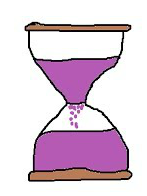10 Ways to Sabotage Your Classroom Management
By Jennifer Gonzalez
You know the basics: Establish clear rules and consequences, be consistent, keep students engaged. But even with all that in place, the small things you do could be wreaking havoc on your whole system.
Here are some habits you might have developed that are messing with your classroom management, along with more effective alternatives.

1. Smiling at the Wrong Times
This was a big problem for me. I thought my students were pretty funny people, so when a kid took those first steps to get us off-track, I couldn’t help but smile. And that just encouraged him to continue. The irony was that five minutes later, I would be yelling at the whole class for getting too wild. Duh.
Alternative: Make a conscious effort to hold a neutral, “on-task” facial expression when you need your class to be focused. I still think it’s important to show students you have a sense of humor and appreciate theirs, but everyone needs to learn that there’s a time and place for it. Have a private conversation letting them know that there will be times when you won’t react to their jokes – that will be your signal that it’s a “serious” time.
2. Handling Problems Publicly
Addressing student misbehavior in a public way risks embarrassing the student, and if she is prone to being oppositional, she’s likely to talk back and dig herself into a deeper hole. You retaliate, and before you know it, a full-scale war has erupted.
A lternative: Whenever possible, address off-task behavior in private. Some teachers silently place a post-it note on the student’s desk to signal that a problem has occurred, then add a check mark for every subsequent infraction.
lternative: Whenever possible, address off-task behavior in private. Some teachers silently place a post-it note on the student’s desk to signal that a problem has occurred, then add a check mark for every subsequent infraction.
Others just speak in a quiet voice by the student’s desk or call the student up to their own. The method isn’t terribly important; just aim for a bare minimum of spectacle.
3. All Sound, No Sight
So many behavior problems start with students simply not understanding what they are supposed to do. This is especially true when teachers only give verbal directions instead of making them visual.
Alternative: Provide visual cues for what students are expected to do. If you want them to do steps 1-4 of today’s lab, then clean up their materials, then read silently for the rest of the period, go to the board and make a quick list: step 1-4, clean up, read. Simply writing those steps on the board will save you from having to remind students or reprimand them for not following the plan.
4. Not Waiting for Quiet
When I observe teachers, I see this mistake more often than any other: They start talking to the class before everyone has completely stopped talking. To be fair, they often wait until almost everyone is quiet, but allowing that last bit of chatter to linger causes problems: Students who don’t hear what you say will either (a) turn to a neighbor to ask, or (b) follow instructions incorrectly. It’s easy to blame kids for being poor listeners, but the problem could actually be the teacher’s timing.
Alternative: Before addressing your class, force yourself to wait a few extra seconds (about five) until everyone – everyone – is completely quiet.
5. Making Students Choose Between Listening and Reading
 When you distribute a handout to students, do you give them quiet time to actually read it? Or do you keep talking, “going over it” and constantly interrupting them to the point where they can’t process any of it? When you do this, you guarantee that students will either skip over something important on the document, or miss a vital bit of information you gave verbally. The brain can’t do both at once.
When you distribute a handout to students, do you give them quiet time to actually read it? Or do you keep talking, “going over it” and constantly interrupting them to the point where they can’t process any of it? When you do this, you guarantee that students will either skip over something important on the document, or miss a vital bit of information you gave verbally. The brain can’t do both at once.
Alternative: If you have preliminary remarks to make before giving students written material, do your talking first, then pass out the papers. Once students have the document in hand, tell them you’re going to give them a few minutes to read it. Then…BE QUIET. If you must interrupt, have students turn their papers face-down and look at you, then give the announcement.
6. Only Speaking in “Don’ts”
If I tell you not to think about a hot fudge sundae, what do you think about? Yep, a hot fudge sundae. Similarly, if you tell a seventh grade boy not to tap his pencil, he still has pencil tapping on the brain.
Alternative: Tell students what to do. These directives can address the problem at hand (Jake, put your pencil under your textbook until I tell you to use it) or distract the student with another activity altogether (Jake, read number 4 for me, please).
7. Taking Too Long
 When a student gets off-task, an ineffective approach is wasting five minutes lecturing her about it. This not only makes you lose valuable instructional time, it also annoys the heck out of the other students, who are forced to sit and watch.
When a student gets off-task, an ineffective approach is wasting five minutes lecturing her about it. This not only makes you lose valuable instructional time, it also annoys the heck out of the other students, who are forced to sit and watch.
Alternative: Just becoming aware of this problem will help you improve it. Remember, you don’t have to settle every issue right away; when an interaction drags on, tell the student you’ll finish talking after class.
8. Staying Up Front
Proximity is a huge key to stopping misbehavior before it gets going. If you’re always at the front of your classroom, you can’t pick up on trouble in the early stages. By the time you notice a problem, it’s already gained momentum, making it much harder to stop.
Alternative: Move around while you teach. Do it so casually and so regularly that students just expect it.
9. Focusing on the Problems
 It’s natural to give your energy to misbehaviors, to only comment when something goes wrong, but you’ll get more cooperation if you give equal (or more) attention to the good behaviors, especially when it comes to students who have trouble with self-control.
It’s natural to give your energy to misbehaviors, to only comment when something goes wrong, but you’ll get more cooperation if you give equal (or more) attention to the good behaviors, especially when it comes to students who have trouble with self-control.
Alternative: You’ve probably heard of “catch them being good,” but actually doing it takes concentration. For some students, you have to wait a while before the desirable behavior happens! Watch Daniel, the pencil-tapper: After you tell him to set his pencil down, does it stay there for a few minutes? Before he grabs it again, go over and say, “Thanks for keeping that pencil down.” Nine times out of ten, that will lengthen the time it takes for him to pick it up again.
10. Taking Things Personally
 No matter what’s going on, taking student misbehavior as a personal affront can only make things worse. But not taking it personally is a lot easier said than done.
No matter what’s going on, taking student misbehavior as a personal affront can only make things worse. But not taking it personally is a lot easier said than done.
Alternative: A mental trick I used to help me step away from those hurt feelings was to think of myself as a service provider – like a dentist – and my students as patients. If my patient got a cavity, I would treat it as best I could, but I wouldn’t take it personally. If things don’t always go well, it doesn’t have to be about me.
Classroom management is so complex, it can take years to develop a style and a system that works. By replacing these habits with more effective practices, you’ll build a better classroom for everyone.
[Illustrations by Jennifer Gonzalez]
https://www.middleweb.com/19037/10-ways-sabotage-classroom-management/

Funny how as much of this can applied to workplace management too.
ReplyDelete